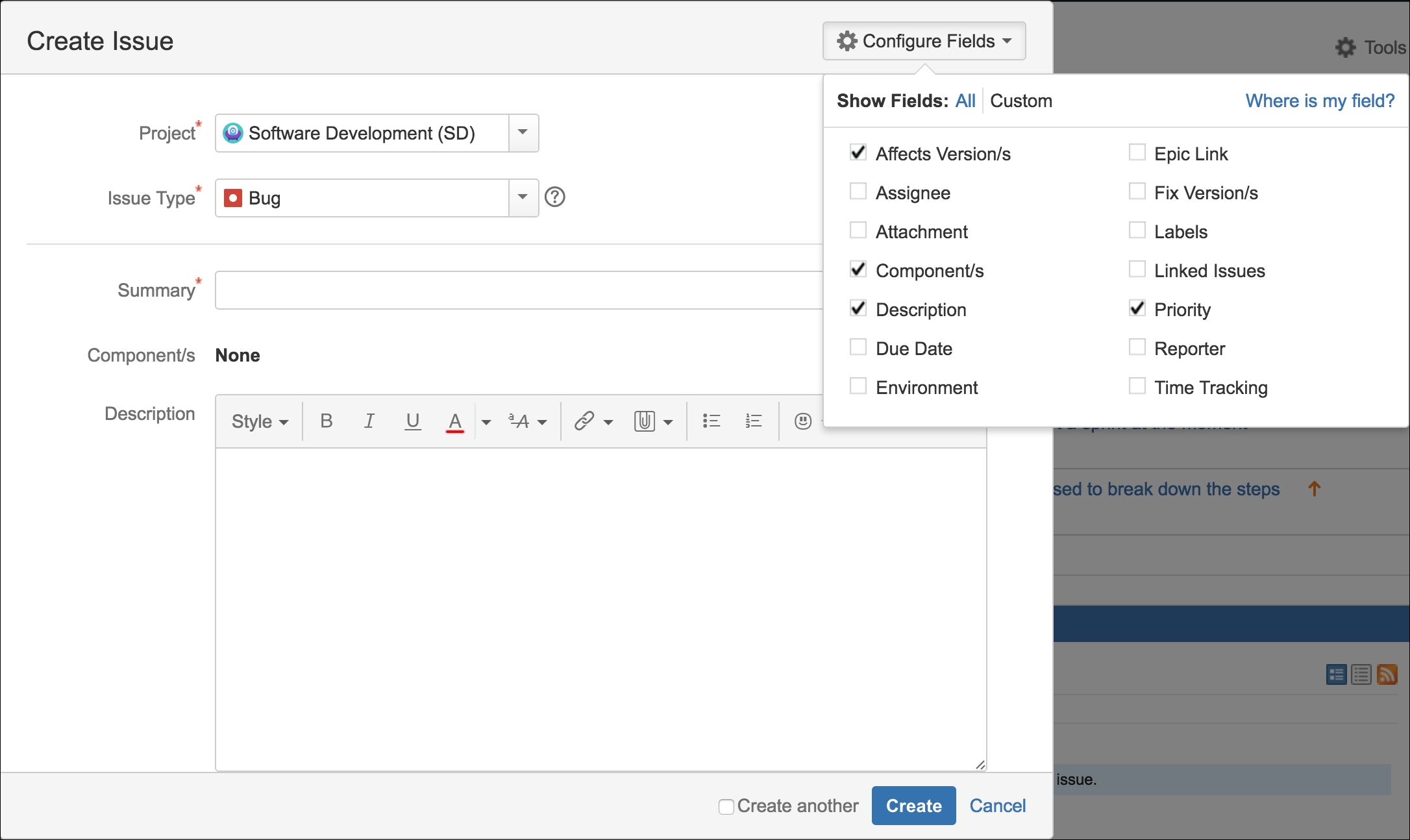As we saw, issues are the center of JIRA. In the following sections, we will look at what you, as a user, can do with issues. Note that each of the actions will require you to have specific permissions, which we will cover in Chapter 9, Securing JIRA.
When creating a new issue, you will need to fill in a number of fields. Some fields are mandatory, such as the issue's summary and type, while others are optional, such as the issue's description. We will discuss fields in more details in the next chapter.
There are several ways in which you can create a new issue in JIRA. You can choose any of the following options:
Click on the Create button at the top of the screen
Press C on your keyboard
This will bring up the Create Issue dialog box, as shown in the following screenshot:

As you can see, there are quite a few fields, and the required fields will have a red asterisk (*) mark next to their names.
The administrator configures what fields will be part of the...



